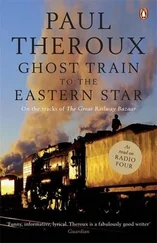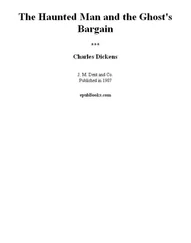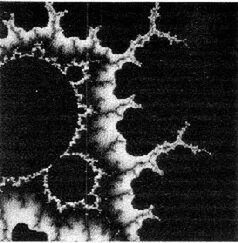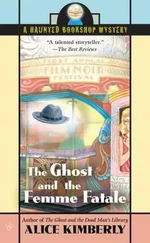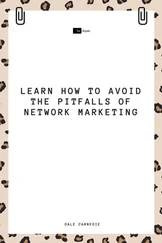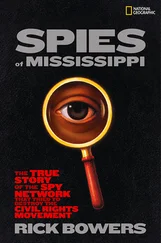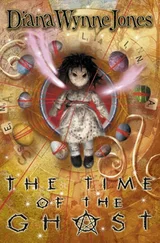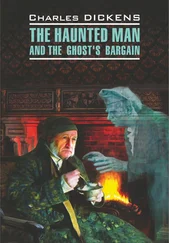Every major review of the album touched on the lyrics’ dark tone. The album sounds like a death rattle; journalists didn’t even have to stretch to find evidence to support stories about Molly’s “depression” or “dark moods”—but that didn’t stop some people from reaching. Roger Popdidian of Rolling Stone , for example, interpreted the poppy, benign “Party Babylon” as the inner monologue of a depressed girl hiding from the comfort of her loved ones in the anonymity of a loud club. h
While the rest of the world was dissecting the album, Taer used the new wave of Molly Metropolis — related Internet dialogue to recharge her batteries and revitalize her morale for her search. On a cold day in late January 2009, Taer loaded Cause Apocalyptic onto her iPod, and walked through the city with Molly in her ears and her nose buried in Berliner’s sketchpad of drawn maps. i
Along with the lines he drew to represent each of the streets he had walked on, Berliner used a series of symbols on his maps: blue X’s, red arrows, and black dots. Taer went to the streets that she knew Berliner had walked on. She compared the buildings and businesses on those streets with the marks on the map. She focused on a small red arrow pointing to a blue X, which appeared just south of the triangle of streets. She also examined a second red arrow, pointing to the intersection of two streets on the triangle.
Taer pondered the symbols all day and, getting nowhere, she headed for home. She looked up from Berliner’s map and found she had walked to the entrance of the L stop at the intersection of North Street and North Clybourn.
She had thought a blue X might mean a certain kind of building, but as she boarded the train she had a new thought: maybe the blue X’s were L stops, and red arrows indicated any place Berliner went into, whether it be a business, residence, L stop, et cetera. If she was right, the blue X with the red arrow pointing to it, the combination of symbols she’d been trying to decipher all day, could indicate Berliner had taken the L from the same North Street and North Clybourn station Taer had just used herself. The second red arrow, then, meant he went into another, unidentified building at the intersection of two streets.
Taer hurriedly scribbled the idea down in her journal, with some commentary: “This could be a non idea. The red arrows might not mean ‘places he went to,’ the blue X’s might not mean L stops. And even if they do, the red arrow pointing to the intersection could just indicate a coffee shop he went into or something. But maybe this is actually something.”
Taer waited until the next day to ask Nix for help. After work, she buttered her up; Taer cooked for her, cleaned the apartment, did all the laundry, and rented her favorite Disney movie (the version of Robin Hood with cartoon foxes). She made sure Nix was half drunk on red wine and full of pasta before she brought up her search for Molly and her new idea about the symbols on Berliner’s map. To Taer’s surprise, Nix didn’t fight. She drank more wine, and examined the map while Taer turned on her voice recorder and explained her theory about the arrows and X’s. Nix flipped through Berliner’s sketchpad, examining earlier maps they barely looked at, then she returned to the last map. “You think the red arrows are the places he went?” Nix asked. j
“Yeah, I think so. It could be.”
“So you think he took the L to Clybourn to go to a building that the second red arrow is pointing to.”
“Yeah! Yes. I mean, it could be nothing. He could’ve been getting coffee there.”
“If that blue X is the L, that means the other red arrow is on Armitage. Can you pull up Google Maps?”
“Yes! Yeah. Okay. Let me grab my laptop.”
“This could be really, really good,” Nix said.
“I know. I’m trying not to get my hopes up,”
“You just figured it out walking around?”
“Yeah,” Taer said.
Taer grabbed their laptops while Nix moved the dinner plates to the sink, and then looked up the area in question, trying to find the two streets that created a triangle with North Clybourn Avenue. Just north of the L, Clybourn intersected with Armitage, and Sheffield.
“Oh yeah, this is it.” Taer said quickly.
“How are you so sure?” Nix said.
“Look at this map. Look at this little road.”
While most of the streets that intersected with North Clybourn formed perfect triangles, the place where Clybourn would’ve met Armitage was interrupted by another, fourth street, North Racine Avenue. If Berliner had walked down Clybourn, Armitage and Sheffield, but not Racine, he would have to draw a triangle with two sides that didn’t meet, just like the lopsided almost-triangle in Berliner’s hand-drawn map.
At the end of Armitage, where it intersected with Racine, Berliner had drawn the second red arrow. Taer looked at the Street View on Google Maps to see what was there. At the intersection of Armitage and Racine, right where the arrow pointed, was a pair of office buildings. They were nearly identical: low, by Chicago’s skyscraping standards, gray, and nondescript. Their plain facades gave no hint about their interiors. In a word, they were boring — a capital crime in worlds populated with pop stars. One was the building that I had found, which listed Antoinette Monson as an owner.
* Thanks to Jade Ashley Zanotti at Bauman Rare Books in New York for helping me track down a copy of the de Poisson biography and to Professor David Whittier of the University of Chicago for an account of the book’s history.
† This birth-order information might’ve been lifted from the biography of Monson’s contemporary (and probable rival-in-absentia) Martin Bohemus. [ I’m not sure what Cyrus means here. Is there another lost biography? What does rival-in-absentia mean? — CD ]
‡ Quotations from de Poisson’s untitled biography have been adjusted to reflect modern spellings.
§ Christopher Columbus’s Second Voyage to America, In His Words , eds. Olivia Dunn and Jamie R. Havert (New York: Farrar, Straus and Giroux, 1999), 15.
ǁ Christopher Columbus’s Second Voyage to America, In His Words , 54.
a From a letter Columbus wrote to the Monarchs. The quotation appears in several books about Columbus, including two that Cyrus owns: The Second Voyage and Ferdinand and Christopher, both by C. W. Peters. — CD
b Simon Charles, History’s Most Hated Cartographer: The New Biography of Antoine/Antoinette Monson (San Diego: Harcourt, Brace and Howe, 1921).
c Simon never revealed his source for the quotation “history’s most hated cartographer.”
d The idea that Antoinette was barren began as court gossip and, in Charles’s hands, became historical myth. Antoinette actually bore three children. Aimé didn’t father any of them, but raised them as his own; as a private, perverse joke, Aimé and Antoinette named each of the children after their biological fathers, Antoinette’s various extramarital lovers. Any record of the children’s proper names was lost, but Antoinette recorded their pet names: Lo-Lo, Freddie, and Bébé.
e The New Biography of Antoine/Antoinette Monson , 206.
f Thanks to Berliner for letting me examine the diary. [ Thanks from me, too. — CD ]
g From 2001 to 2007, hip-hop and R&B dominated the Billboard charts and made up the vast majority of the number one singles. In 2008, Black Eyed Peas was poised to dominate the year’s charts with their two huge hits “Boom Boom Pow” and “I Gotta Feeling.” Their chart domination ended when Molly’s third single “New Vogue Riche” toppled “I Gotta Feeling,” ending a fourteen-week number one streak.
Читать дальше

